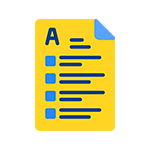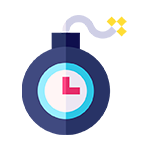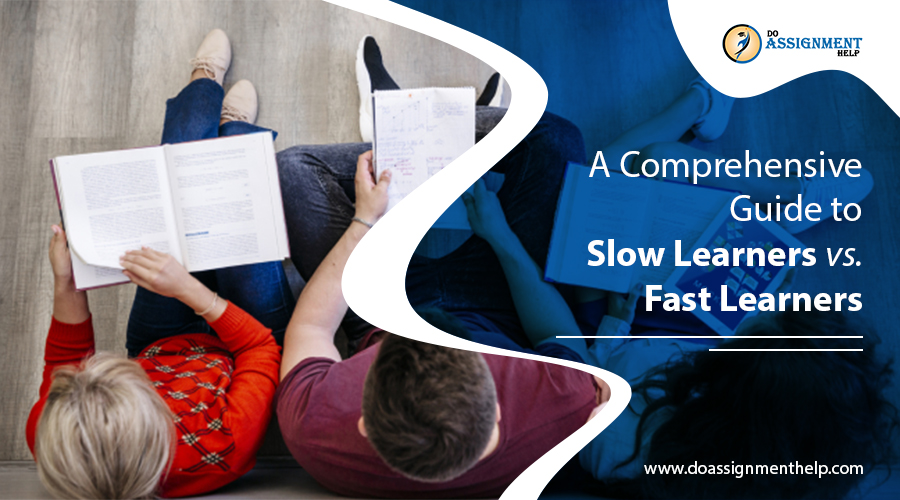“The capacity to learn is a gift; the ability to learn is a skill; the willingness to learn is a choice.” – Brian Herbert
Everyone develops at their own rate, and this adage couldn’t be more accurate. Students come in a variety of sizes and forms, and this also holds true for their capacity to absorb and understand new material. These variations are referred to as slow learners, reluctant learners, and rapid learners. Reluctant learners may lack interest or ambition to learn, while slow learners may struggle academically in school. On the other side, quick learners have excellent analytical skills and can assimilate material more quickly.
We’ll examine these various learner types in more detail in this blog article, along with the support that teachers can provide for each. We’ll look at methods for getting slow learners through their obstacles and advice for advancing the abilities of fast learners. Academic achievement requires both teachers and students to recognize and understand the many types of learners. So let’s get started!
Table of Contents
Slow Learner
“A slow learner is not a no learner.”
What is a slow learner? If any person has an IQ level ranging from 70 to 85, low-ability students are commonly referred to as “slow learners.” This is a very huge population of 14.1%. This population includes children with autism, intellectual disabilities, and learning disabilities combined.
However, it is very difficult to do research and find out each year for this huge and vitally important population. Even though they frequently lack the abilities to succeed in school or in general society, slow learners are infrequently eligible for special education programs or community services. For this set of students, there aren’t many expansive, creative educational or mental health programs.
Characteristics of a Slow Learner
Although they developed their walking and talking skills, they appeared slower than other kids.
- They struggle academically in kindergarten, and they continue to lag behind every year after that.
- Slow learners may appear immature for their age.
- While they like interacting with other kids, they prefer playing with kids who are younger than their own age.
- They establish acquaintances, but those friendships don’t appear to stick.
- While doing a conversation, they struggle to express their points.
- At a young age, they may want to be treated as adults, but they act much younger than their peers.
- Their concentration spans are shorter.
- They try to learn, but they never seem to remember what they learn, and they have trouble following complicated instructions.
- They routinely perform poorly on achievement tests, although they may do well with practical material. Despite their best efforts, they fall behind their peers.
- Slow learners usually face problems with reading and writing.
- Their self-esteem is very low, and they need support and encouragement to stay motivated.
- Their focus span is very lesser and do not have long-term objectives.
Reluctant Learner
A student who is a reluctant learner is one who is not engaged in what the teacher is teaching and is, therefore, unable to pick up new material within the time allotted or in the manner intended.
The difficulties of working with a student who appears unmotivated or who displays reluctance to participate in the class or in particular activities are undoubtedly familiar to most educators. Because the teacher might not be able to precisely identify the “trigger point” or cause, it can frequently be very difficult. Because they may feel powerless in their attempts to connect with and reach these students, the teacher may also find this to be incredibly frustrating.
Characteristics of a Reluctant Learner
Children and teenagers may not be motivated or disengaged in school for a variety of reasons.
- They find the class boring or believe the material is unimportant to their lives.
- They are famished or worn out.
- These kids are managing additional social and emotional challenges in their lives.
- They are not connected to the instructor or other pupils.
- They wish to avoid appearing foolish in front of other people.
Fast Learners
“Fast learners don’t just rely on their intelligence, they also use their curiosity and creativity to excel.”
A “fast learner” is also known as a “quick learner.” Someone who can easily learn new things compared to their peers. They process information faster as compared to others and put it to use. Quick learners may have good listening and communication abilities. Quick learners may display strong analytical abilities; they will process the knowledge and put it to meaningful use.
Characteristics of a Fast Learner
- They are learning by doing
- Not afraid to say “I don’t know”
- Realize that many questions have no answers
- Fast learners can explain things to small kids easily.
- They can explain it in one sentence.
- Fast learners can visualize things.
- They can do more and think less.
Tips for Helping Slow Learners
-
Provide a peaceful study space for them:
Find your child a study area with no distractions because slow learners are easily distracted.
-
Ask questions:
Ask your youngster questions like, “What do you make of this?” “Can you tell me the difference between these two?” “What is the meaning of this word?” and other similar ones.
-
Be easily reachable:
Avoid giving the impression that your child is taking all your time. Help your kid in your own way. However, do not perform any of the assignments they have been assigned, but assist them.
-
Assign small tasks:
Give short assignments because the issue of a short attention span is persistent.
-
Don’t let them quit:
They may be really worn out since slow learners require more time than their classmates to comprehend a topic or complete a task. Do not exhaust them at any point when they give up. If you have to, give them a break.
-
Avoid labeling them:
Don’t constantly bring up how your child is a sluggish learner and can’t keep up with peers in terms of accomplishments. Keep your support up throughout.
-
Be patient:
You have to be patient with these kids. Help him to follow the school curriculum or is making an effort to do so.
9 Ways to Become a Fast Learner
Anyone can become a fast learner with the right approach. There are multiple techniques for doing so. However, it completely depends on the individual to decide which technique will work for him or her. You can also use a combination of techniques to figure out the best combination for you. Below, we are sharing some of the common ways that you can also try to speed up your learning process.
1. Define a Goal
What qualifies as a learning achievement? Is the goal to master the material in the shortest amount of time or to learn as much as possible in the allotted amount of time? Giving you all is simpler if you have a reasonable objective in mind. A pupil will therefore learn more enthusiastically if they are aware that the objective is to master two lessons as quickly as feasible and the entire curriculum. Realistic goals are the number one enemy of quick learning because they induce students to lose concentration out of concern that they won’t understand the information in time.
2. One Task at a Time
There may initially seem to be too much to learn and not enough time. Many people make the error of quickly skimming the material in an effort to absorb as many details as possible. The truth is that breaking up the content into smaller parts will make the learning process far more effective. In this approach, students will study more thoroughly and more quickly, and the sense of satisfaction they will have after successfully completing each unit will undoubtedly inspire them further.
3. Making a practical plan
One must accurately predict how long it will take to do a certain task in order to be a successful learner. Students frequently overestimate their abilities, which causes them to lose steam and fail. Giving yourself extra time is preferable to being under continual stress.
4. Learning through Lectures
Many children struggle to learn when left to their own devices. They lack motivation, struggle with concentration, and progress too slowly. However, it has been found that children learn much more quickly if they get help from others.
5. Acquiring Knowledge
Fast learning requires significant psychological effort, good habits, and dedication. One must first decide on the time of day that will be used for studying. Additionally, it’s important to always study in the designated study area. The only items allowed in the study area should be those required for learning. To help the learner’s body adjust to the habit, the process should always take the same amount of time.
6. Using a Variety of Information Sources
Using a variety of sources makes studying the information much more effective. Watching informative films or taking online courses might occasionally save us hours of studying. It is more helpful in the case of assignments at school and doing the research part. Thanks to the internet, we can access a lot of information through various resources, such as blogs, videos, podcasts, forums, social media, and online books. This is also excellent preparation for more difficult jobs that will arise in college or at one’s next job.
7. Making Notes
Fast learning may result in some information slipping through the cracks. For this reason, it’s crucial to periodically make notes on the most crucial information. You can use whatever is convenient to you, whether you record the notes or write them on paper.
8. Focus on Rest and Physical Activity
Rest is an essential component in quick learning, despite the impression that it is a constant activity. Getting enough sleep and taking regular study breaks are necessary for maintaining focus. You should stay away from stressful situations like studying by rote the night before an exam because of this. Like the rest of the body, the brain requires rest in order to be able to take in and process information.
A good habit is to go to bed and rise at the same hour. Obviously, a minimal amount of sleep is eight hours, and younger students require even more. Additionally, the body needs time to recover from learning, which is another reason why students should engage in physical activity during breaks.
9. Welcome New Learning Techniques
Nobody’s preferred technique of learning fits them perfectly. Children should experiment with multiple approaches to find a winning formula because of this. Finding the most effective methods is vital for overcoming increasingly difficult difficulties in college and subsequently in one’s professional career; therefore, school age is the ideal period for experimentation.
Career Impact of Slow Learners
Hey, just so you know, being a “slow learner” doesn’t mean you can’t have a successful career. There’s a lot of stuff that helps you succeed in your career, like working hard, being determined, never giving up, and being able to learn and change.
But if you’re a slow learner, it might just mean that it takes you a bit longer and requires more work to pick up new things or get better at new stuff than someone who’s a quick learner. This could mess with your job chances since some industries or roles need you to learn and do things quickly.
Sometimes, people who learn at a slower pace might need some extra help or adjustments to do well in their jobs. This could involve some extra training, having someone guide you, or just more time to finish things up.
Hey, just so you know, it’s totally cool if you’re not the fastest learner. We all have our strengths and weaknesses, and that doesn’t mean you’re not awesome and capable of achieving great things. If you work hard and stay dedicated, you can totally reach your career goals, no matter how long it takes you to learn.
Conclusion
Understanding and identifying different types of learners is essential for educators to effectively teach and support their students. By recognizing the characteristics of slow learners and reluctant learners, teachers can implement strategies to help them overcome their difficulties. Meanwhile, fast learners can continue to hone their skills by practicing various techniques and remaining engaged in the learning process. Ultimately, it is crucial for all students to receive patience, understanding, and support in their academic journey. You can contact our assignment help experts for more detail about the learners.
 Santa Clara, CA 95050
Santa Clara, CA 95050 





